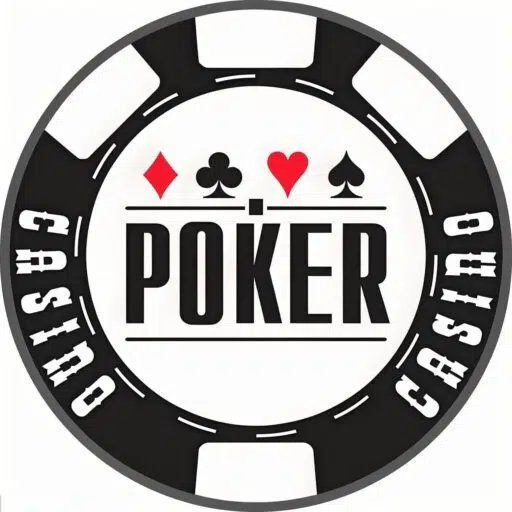
When you're feeling bold, it's time to stack the chips. Don't falter now, this is your chance to seize the moment. Remember, a big play can pay off. Stay clear of getting too reckless, there's still much to achieve in this game.
- Consider your options carefully.
- Think about the consequences
- Make a calculated move
Significant Wagers, High Rewards

In the realm of high-stakes endeavors, victory is a glittering beacon tempting ambitious souls. Each step forward is fraught with challenges, demanding unwavering focus and calculated decisions. The opportunity for reward is undeniably alluring, fueling a burning desire to triumph. It's a exhilarating cocktail of risk and glamour, where the line between triumph and failure can be razor thin.

Yet, for those with the courage to embrace the challenge, the rewards can be astounding. A single move can alter destinies, leaving an indelible mark on careers. It's a game of skill, strategy, and brute luck, where the pressure are always incredibly high.
Decoding Poker Chips
Each hand at the poker table is a symphony of strategic bets and calculated risks. But beyond the raw numbers lie subtle signals woven into the language of poker chips. A player's pile isn't just a measure of their assets; it tells a story about their confidence. A measured push of chips across the table speaks volumes, while a aggressive dump can be a bluff. Recognizing these nonverbal gestures can give you an edge in the game.
- Observe closely to how players interact with their chips.
- Analyze changes in stack size and betting patterns.
- Remember the context of the hand and the player's overall behavior.
By unraveling the language of poker chips, you can gain a deeper knowledge into your opponents' motives, giving you a valuable advantage in this game of skill and strategy.
Chip Colors and Denominations
In the realm of casino gaming, tokens come in a range of bold colors, each typically representing a specific value. From the traditional green {symbol{ of low denominations to the high-end red chips that signify big amounts, the diversity of chip colors adds a layer of visual appeal to the gaming floor. Players can easily distinguish between different token values simply by their shade, making for a efficient gameplay experience.
- Frequent chip colors include green, white, red, blue, and black, each with a corresponding value.
- Some casinos use unique chip colors to separate specific games or events.
- Gaming establishments may also offer promotional chips with unusual colors and designs for competitions.
Analyzing the Chips : A Guide to Poker Chip Usage
At its core, poker is a game of reading your opponents. While their expressions are valuable clues, understanding how they use their chips can provide you with deeper insights into their strength. A savvy player learns to decode the nuances of chip usage, gleaning information about bet sizing and ultimately making more calculated decisions.
- For instance, acompetitor's tendency to make aggressive bets with small chip stacks might indicate they are holding a weak hand. Conversely, a measured approach to betting with large stacks could suggest a strong strategy.
- Pay attention to how chips are stacked during different stages of the game. A competitor's hesitation to commit their chips can reveal a lot about their assessment of the round.
- Furthermore, observing how players manage their chips throughout the game can provide clues about their overall approach. Are they aggressive? This information can help you anticipate their future actions.
Mastering the art of reading the table requires practice, observation, and a keen understanding of poker psychology. By paying close attention to how players use their chips, you can gain a valuable edge in your game. Remember, every chip has a story to tell - if you learn to listen, it can lead to victory.
Buying In and Betting with Chips

Alright, you're seated at the table, feeling that thrill. Now it's time to buy in and start betting. Depending on the game, there are usually a few different ways to chip in some action. You can opt for a stack of chips right away or test the waters with a small buy-in. Remember, every game has its own regulations, so it's important to become acquainted with them before you {startwagering.
- Keep a level head
- Manage your bankroll wisely
- Have fun!
The All-In Moment: Chip Counts Matter
At the poker table, there are moments where intuition overwhelms cold, hard numbers. This is the all-in moment, a high-stakes showdown where your entire stack becomes the prize. But even in these heat-of-the-moment clashes, recognizing chip counts can make your success. Don't let emotions cloud your judgment - a quick glance at the stacks can reveal crucial information about your opponent's position and their willingness to bluff.
- Grasp the power dynamic. A player with a massive stack holds an undeniable advantage, able to dictate the pace and pressure.
- Analyze your opponent's possible cards. Are they calculated? Their chip count can offer clues about their approach.
- Recognize that a short stack often leads to more risk-taking, presenting potential opportunities for you.
The all-in moment is a test of both skill and calculation. By paying attention to chip counts, you can make informed decisions that increase your chances of profit. It's about navigating the unpredictable waters of poker with a clear head and a strategic edge.

Mastering Deception: Using Chips Strategically
At its core, poker is a game of calculated risks and strategic decision-making. While having a strong hand is undeniably important, mastering the art of the bluff can be equally pivotal to your success. Utilizing chips strategically when bluffing isn't just about throwing money around; it's about expressing confidence and influencing your opponents' perceptions.
- Strategic raise can signal strength even when your hand is weak, forcing other players to fold or reconsider their own bets. Conversely, a cautious approach with small bets can mask your true intentions and lull opponents into a false sense of security.
- Analyze your opponents' betting patterns and body language. Are they prone to folding easily? Or do they tend to see through bluffs? This knowledge can inform your chip strategy, allowing you to adjust your bets accordingly and maximize the impact of your bluff.
- Always be aware that a successful bluff isn't just about the chips; it's about creating doubt and uncertainty in your opponents' minds. By betting strategically and displaying confidence, you can influence their decisions and ultimately tilt the odds in your favor.
From Clay to Casino: The History of Poker Chips


Poker chips, those ubiquitous tokens Poker chips of chance and strategy, have a fascinating history spanning centuries. Initially, games were played with actual money or even items. But as poker gained in popularity, the need for a standardized and convenient system of wagering became evident. The first official poker chips were crafted from clay in America/the 19th century/the late 1800s, often resembling coins.

Over time, materials and designs transformed. The use of manufactured plastic chips became commonplace, offering a more durable and adaptable option. Today's poker chips are available in a dazzling array of colors, images, and even materials like ceramic Poker chips and metal. Each chip is a miniature work of art, reflecting the evolving tradition of this beloved game.
Poker Chip Collecting: A Passion for Plastic
For plenty dedicated collectors, the allure of poker chips goes beyond purely gambling. It's a compelling hobby that involves acquiring these colorful tokens, each with its own unique story. Whether it's the vibrant patterns or the historical importance they hold, poker chips have become sought-after artifacts for enthusiasts around the world.
The excitement of the hunt can be just as pleasurable as finding that elusive chip. Online groups and auctions provide a platform for collectors to share, trade stories, and expand their collections.
- In essence, poker chip collecting is a committed hobby that offers a wealth of insights. It's more than just the chips themselves; it's about honoring the history and culture of this beloved game.
Mastering the Basics: Your Poker Chips

At the center of every poker game lies a fundamental concept: your chips. These colorful tokens represent value, acting as your currency at the table. Understanding how they work and how to manage them effectively is crucial to success in the long run. From the smallest denominations to the hefty stacks of high-value chips, each one tells a story about the current situation.
- Familiarize the chip values and their denominations at your chosen game.
- Monitor your chip stack throughout the game, adjusting your betting strategy accordingly.
- Be mindful of entry amounts and how they impact your starting chip count.
By cultivating a deep understanding of your chips, you'll be well on your way to making informed decisions at the poker table. Remember, a good player analyzes more than just their cards – they also assess the language of chips.